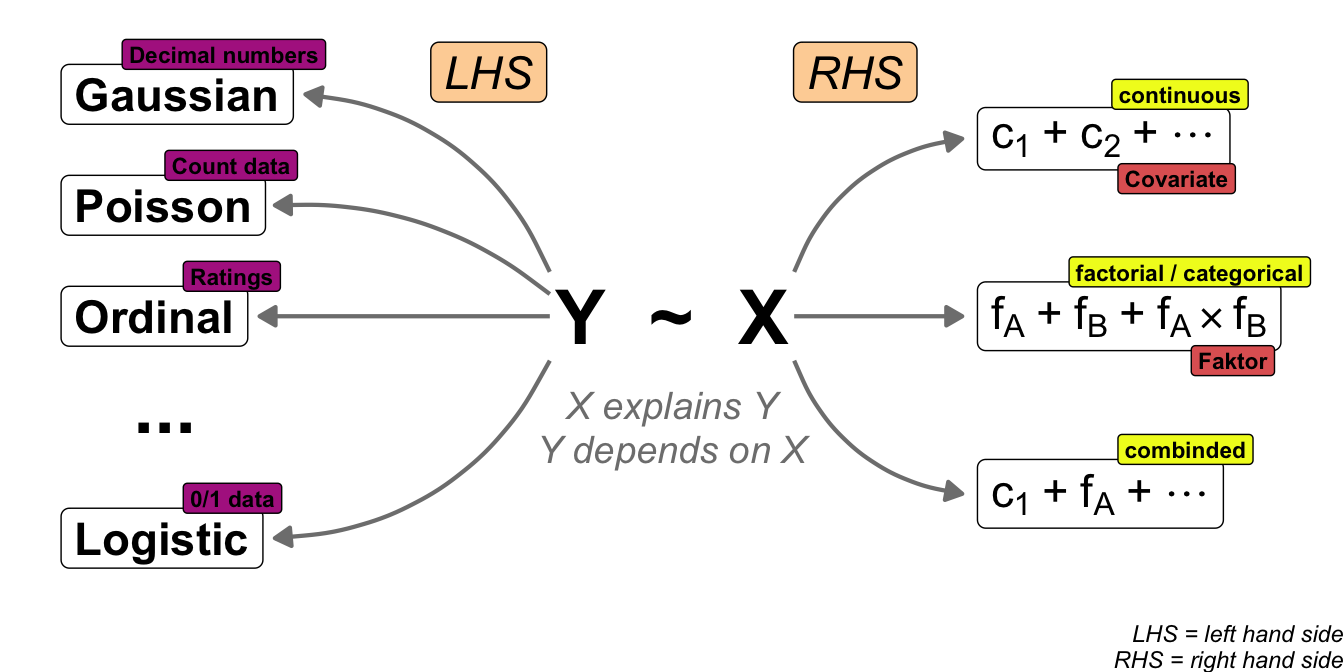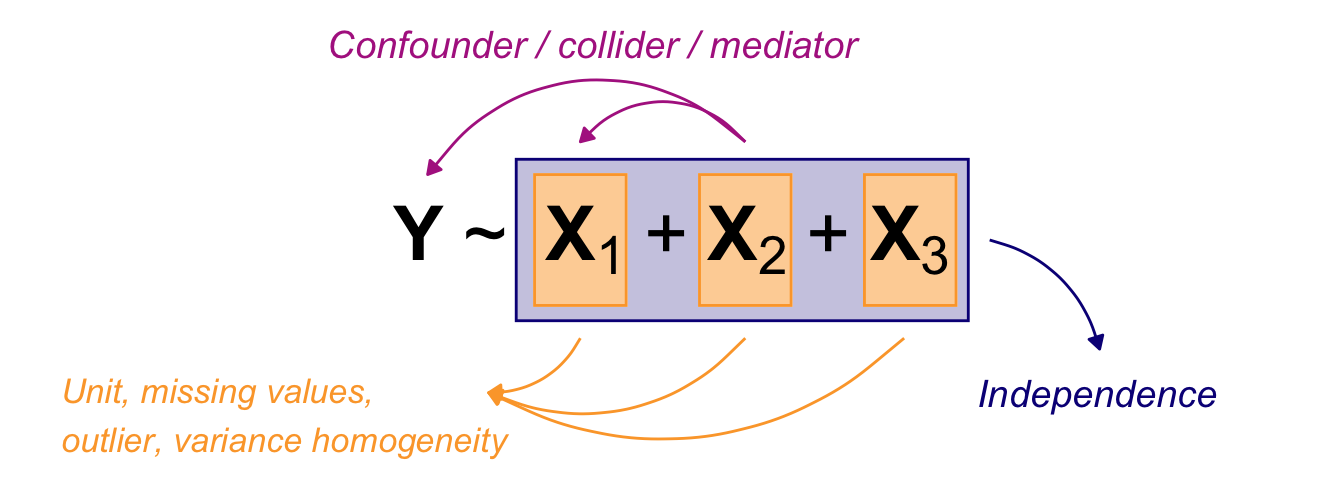3 What is a model?
Last modified on 26. November 2025 at 13:17:46
“A quote.” — Dan Meyer
Imagine you are standing on a globe but still believe it is flat. You are standing on solid ground, with boiling rocks a few kilometers below you. A few kilometers above, you cannot breathe anymore. You are not moving, but the Earth is moving at speeds of up to 828,000 km/h, depending on the reference point. Your reality is a serious misinterpretation.
3.1 General background
| Symbol | Name | Application | Description |
|---|---|---|---|
| \(y\) | outcome, response, endpoint, dependent variable | The right-hand side (abbr. RHS) of the model. Describing the values measured in an experiment or study. | |
| \(x\) | influencer, influential variable, risk factor, fixed effect, independent variable | The left-hand side (abbr. LHS) of the model. Describing the influential variables in an experiment or study. | |
| \(z\) | random effect | A factor that provides a description of an grouping variable, which is not part of the controlled experimental setting. | |
| \(x\) | explanator, explanatory variable | Explanation | The influencer is used to describe or explain the outcome. |
| \(x\) | predictor, predictive variable | Prediction | The influencer is used to predict the outcome. |
| \(x\) | focal explanator, focal predictor, focal variable | Main effect | In a model with multiple influencers, the focal variable is the variable of primary interest. |
| \(c\) | covariate, covariable | Continuous \(x\) | The influencer is a numeric variable with continuous values. |
| \(f_A\) | factor A, factorial variable, categorical variable | Categorical \(x\) | The influencer is discrete, functioning as a grouping variable, such as an experimental group or a treatment. |
| \(A.1\) to \(A.j\) | levels, groups, treatment groups | Factor \(f_A\) | The discrete groups included in one factor A. |
A sentence why we use \(y\) and not \(x\) for mean and other stuff.
1 What is a statistical model?
2 What do we mean by a statistical model?
3 What Is the Purpose of Statistical Modeling?
4 Where do statistical models come from? Revisiting the problem of specification
3.2 Theoretical background
3.3 R packages used
3.4 Data
3.5 Alternatives
Further tutorials and R packages on XXX
3.6 Glossary
- term
-
what does it mean.
3.7 The meaning of “Models of Reality” in this chapter.
- itemize with max. 5-6 words
3.8 Summary
References
[1]
McCullagh P. What is a statistical model? The Annals of Statistics. 2002;30(5):1225-1310.
[2]
Appleton DR. What do we mean by a statistical model? Statistics in medicine. 1995;14(2):185-197.
[3]
Hand D. What is the purpose of statistical modeling? Harvard Data Science Review. 2019;1(1).
[4]
Spanos A. Where do statistical models come from? Revisiting the problem of specification. Lecture Notes-Monograph Series. Published online 2006:98-119.
[5]
Gilchrist W. Statistical Modelling. Wiley Chichester; 1984.









